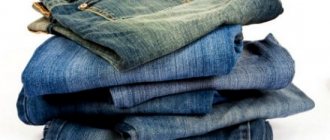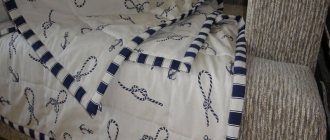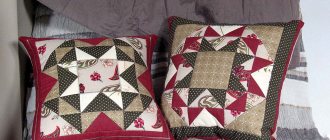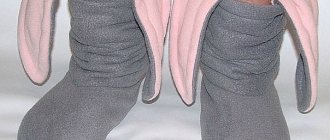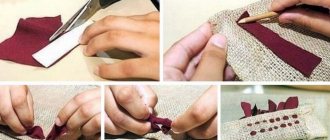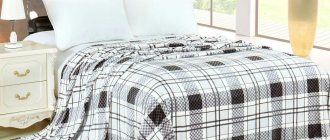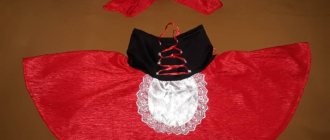According to statistics, every European wears out about two hundred pairs of jeans throughout his life. Fashion is constantly changing, the wardrobe is replenished with new models. But what to do with old jeans? It would be a shame to throw them away. A good solution would be to sew an original bedspread from your favorite old jeans. The fabric of these trousers is very durable and reliable. It can serve for decades without losing its attractiveness. There is no point in sending something like this to a landfill. It will make a beautiful bedspread for a bed or sofa.
The fabric from which the jeans are made is so practical that, even if slightly frayed, it does not lose its strength and attractiveness.
Detailed instructions for making a bedspread from old jeans are discussed in this publication.
What does a beginner need to know?
Making an original bedspread from old jeans with your own hands is relatively easy. This product is very similar to a mosaic consisting of dozens of pieces.
A blanket made from scraps of fabric that can be found in every home
During work, beginners must follow certain stages of work.
The first stage is the selection of basic materials and tools. You need to prepare everything you need in advance so as not to waste time searching for details during the process.
The second stage is the selection of a pattern and pattern. The pattern is selected based on the characteristics of the raw material and the wishes of the craftswoman.
Scheme of a patchwork double-sided bedspread with dimensions
There are many options for connecting patches. You can choose one of them and come up with something new. For beginners, it is better to use the simplest scheme, a ready-made pattern. A simple blanket made from old jeans will be just as attractive. You can practice while sewing it. Only after gaining a certain amount of experience will it be possible to use more complex schemes.
The third stage is washing and ironing. The product needs to be put in order. The bedspread should be washed delicately, avoiding high temperatures. A properly selected rinse aid will help make the product softer. After drying, the patchwork blanket made from old jeans should be thoroughly ironed using steam. The perimeter of the bedspread can be decorated with beautiful fringe and colored edging. A beginner can highlight interesting ideas on edging on the Internet, magazines, and specialized books.
Decor features
By making a patchwork blanket from jeans with her own hands, a needlewoman can show her imagination and decorative talent. Thus, the seams on the product will look advantageous when decorated:
- lace ribbons;
- beads;
- beads;
- in chains;
- beautiful buttons;
- bugles and so on.
An embroidered relief or flat seam can be an excellent decorative element. The entire perimeter of the product can also be decorated with fringe and all kinds of patterns can be created on it.
Which pants are suitable?
You can sew a blanket from old jeans only from durable, high-quality fabric. Then it will have an attractive appearance. Raw materials must be selected taking into account some nuances:
- Worn parts of trousers cannot be used. They should be cut off and thrown away.
- The fabric should have a uniform shade. Then the bedspread will look amazing. Guests of the house will not be able to distinguish it from the purchased one.
- You can combine pants of different colors. However, the density of the fabric should be approximately the same.
- Items with damage or pockets should be cut out and thrown into a landfill. Such raw materials are unsuitable.
Recommendations from experienced professionals
Beginners will always find some recommendations from experienced craftswomen useful:
- It is advisable to carefully tear off the back pockets of all pairs of old jeans, because they can also be useful for decorating the finished product;
- It is not necessary to wash and iron the entire old jeans; you can first cut out fragments from them and carry out these manipulations with them;
- Don’t be afraid to combine denim of different shades in one blanket;
- you need to purchase only strong, thick needles for sewing denim;
- Jeans that are too old can fall apart during work, so it is advisable to sew them together in large fragments.
Pockets should be carefully opened
Patterns, bedspread schemes
Beautiful bedspreads from old jeans are obtained when needlewomen adhere to the same stitching technique while working. There are different patterns and diagrams. Many people create products from large squares and rectangles.
A thin blanket of “Quick Squares” is made from three multi-colored stripes
The watercolor technique involves connecting squares in a certain color sequence.
Some people make different patterns out of them. Experienced needlewomen create bedspreads from pieces of different sizes. This option is more complex. The table describes the most popular techniques for sewing scraps of fabric.
| Technique | Features of work |
| Quick squares | This is the best solution for beginners. Available stitching technology will allow you to create a blanket in just a few hours. The square is created quite simply. You need to take two types of fabric. Usually different colors are chosen. You should cut out two rectangles from them and sew them along the long side. The resulting seam needs to be steamed and smoothed. Next, take a third fabric of a different color. A rectangle is cut out of it. The long side should be equal to the width of the previous strip. From these fragments you need to sew a sleeve. Squares are obtained from it using a special template. The resulting blocks can be used to create extraordinary compositions. |
| Watercolor | This technique is based on playing with color. All squares and scraps should be connected in a certain sequence according to color. A very popular idea is to create a color gradient. In this case, dark fabrics are first connected, gradually moving to light ones. It’s difficult to make a blanket like this from old jeans with your own hands. You will have to spend a lot of time and effort selecting a color sequence. |
| By stripes | It is relatively easy to create an original composition using stripes. Use strips of the same width and length. They are carefully cut from jeans and sewn according to the chosen pattern. Ready-made diagrams and strip measurements are easy to find on the Internet. You can also use this technique to express your own imagination. The strips can be combined in different variations. The main thing is to first draw a plan with measurements. It will be much easier this way. |
| Crazy patchwork | This is quite a complex technique. It will be suitable for needlewomen with extensive experience. In this case, it is allowed to use different colors and shapes of the component parts. The master must carefully connect the multifaceted sides of the elements together. This option is suitable for those housewives who only have a few scraps of fabric left. It won’t be possible to make identical figures out of them; it would be a shame to throw them away. All that remains is to chaotically connect the elements together, using only your own imagination. |
A denim blanket made from stripes looks original and is easy to sew
Denim patchwork bedspread using the crazy technique
Round patchwork technique
In the process of work, it is not necessary to use only squares or rectangles - some craftsmen prefer to make blankets from round pieces of fabric.
In this case, you will need to prepare the following:
- disk;
- a simple pencil;
- scissors;
- old jeans;
- sewing supplies.
Step-by-step instruction
Step 1. You need to carefully iron the old jeans, then draw circles on them on the back side, using a disk (stencil) for this. After which they should be cut out.
Round blanks
Step 2. From the wrong side of our parts we draw an even square.
Draw a square on the other side
Step 3. Next you will need to fold the fragments together with the front sides facing inward. In this position, the parts should be basted. At the same time, some craftswomen prefer to exclude this step, but beginners are advised to make an outline. Then you can sew the details.
Making a stitch using a sewing machine
Step 4. Next, you need to lay out the parts and straighten the allowances.
Straightening the allowances
Step 5. Next, you should make a zigzag seam on the bend (you need to set certain settings on the sewing machine).
Making a zigzag seam
Step 6. Next you need to make a hem and sew such parts together.
Sew the parts together
Step 7. Based on this model, you can make a blanket - to do this, you need to put a piece of another material inside.
We take pieces of other material
Place the pieces inside
Sew the parts together
Video - Method of making a blanket from jeans
Photo selection of beautiful and useful do-it-yourself bedspreads made from old jeans:
PreviousTextilesKnitting a blanket
Next
TextilesHow to wash a blanket?
Sewing tools
Once the diagram has been found and a couple of old denim pants or jackets have been prepared, it’s time to sort out the tools. Among other things, you will need:
- Lining fabric;
- Strong threads and thick needles;
- Tailor's scissors or any other sharp scissors;
- Paws and pins, awl;
- Sewing machine (with it the process will take much less time);
- Pattern (diagram), chalk, ruler or centimeter.
Important! This is not the entire list of tools that may be needed during manufacturing, but in some cases you can even limit yourself to an even smaller set.b
Knitted bedspread and pillow covers
Blanket made of stripes with a 3D pattern
There is another way to make a blanket from pieces of fabric, which produces an equally attractive and comfortable product. It is worth noting that for some beginners this method may seem more complicated.
The finished blanket will have such an unusual pattern
Step-by-step instruction
Step 1. It is necessary to prepare the material that will be used as a substrate. An unnecessary cotton sheet is best suited for this (the main thing is that it is intact). The cut dimensions must match the blanket. A few centimeters should be left to allow for seam allowance.
Preparing the material for the base of the blanket
Step 2. Next we need to take the denim and cut it into strips about 45-50 millimeters wide. If desired, you can make such blanks narrower or wider - it depends on what kind of blanket you plan to get in the final result.
Cutting denim strips
Step 3. Next we have to make a hem of about 1 centimeter on each side of such a strip. After that, you need to go over the hems with an iron to fix them in this position. In this case, we used three shades of fabric (we sew from darker to lighter).
We form hems on both sides of each strip
Step 4. We attach the strips of the main color to the backing using special sewing needles. The image shows seven such fragments, but if desired, you can make more of them (then the blanket will be, accordingly, wider).
We fix the strips on the substrate - it is important to check that they are positioned evenly
Step 5. Next, take a strip of a different color and pass it under the first strip at an angle (as shown in the photo).
We use a strip of the second color
Step 6. We continue to lay the same strip under the main ones. You must follow the same pattern as in the image.
We lay the strip further
Step 7. We pass another strip under the first two at the same angle (as in the image).
Passes a strip of a different color under two base strips
Do the same with the entire blanket.
As a result of the work done, this should be the basis for the formation of the subsequent drawing
Step 8. Then you should take a strip of a different color and pass it, starting from the right edge. The result should be a kind of rhombus - this allows you to connect the squares from the previous material with each other.
Pass a line of a different color at an angle
The result should be a blanket like this (after the first strip)
Step 9. The same steps must be done with another strip of this material.
Gradually, an unusual three-dimensional pattern is formed on the surface.
Step 10. After all the strips are connected, you need to fold the base and stitch it. In this way we made an unusual blanket from old jeans.
Fold the base and stitch it
Video - The idea of creating a denim rug
Before you start:
- Wash denim pants or other denim items and dry them.
- There is absolutely no need to rip out every seam on the product; it will take too much time and effort. Arm yourself with scissors and cut the garment around the perimeter near the seams, leaving only the usable portion of the material. Throw away whatever is left over, or save it to create jewelry.
- Carefully inspect the material for stretch marks and damage. Pay special attention to the areas of the knees and hips, they are most susceptible to stretching.
- Cut off the back pockets and leave them for decoration.
- Gather all the resulting fabric together, and now you are ready to cut out the parts for your future bedspread.
Variety of types of flap connections
There are two main types of patchwork needlework - classic and crazy sewing.
- In the first case, craftsmen select scraps of two similar colors and cut them into the same shapes and sizes, after which they sew them together according to a specific pattern. Such things turn out to be dense, high-quality, voluntary, but have a very discreet design.
- The second technique involves randomly combining denim patches of different shades and shapes. Using this technique, you can make a wide variety of the most original products from jeans - these can be both decorative items and stylish clothes.
Jeans with loose threads are used for patchwork using the chenille technique . Items in which individual pieces of fabric are combined in different orders look very interesting, for example, combining dark blue and light blue denim, yellow and brown. The combination of snow-white and black canvases looks beautiful. Some craftsmen sew together multi-colored pieces of fabric using the mosaic principle.
Denim patchwork is often additionally decorated - denim looks very good in combination with metal elements (zippers, pendants), and they can also be decorated with embroidery, lace or beads.
The most important thing in this case is to feel in moderation, then the product will turn out stylish and harmonious.
Plaid with fringes
Materials:
- 350 squares 15x15 from old jeans;
- 350 fabric squares 15x15 (can be multi-colored);
- machine;
- scissors;
- wire cutters;
- a brush with stiff bristles.
Instructions:
- Take a denim square and apply the wrong side to the wrong side of the lining.
- Let's make one more preparation.
- Fold 4 layers of fabric so that the denim side is on the outside.
- Let's make a line.
- Next, we sew the pairs into fours, fours into eights, etc.
- After all the squares are sewn, we use cutters to make notches along the seam, but so as not to damage the stitches.
- We cut off the corner joints.
- Now we “comb” the joints with a brush to create a fringe.
- If necessary, you can iron the product using the steam function to avoid distortions. The blanket is ready.
- Denim vest made from old jeans
- Bag-tablet made from old jeans
Fabric preparation
Jeans are suitable for sewing a patchwork bedspread. If there are several things of different shades and textures, this will only be a plus. Their combination will make the bedspread more interesting.
Before you begin cutting, items must be washed in warm water. After this, you should rip, or better yet, cut off all the seams and pockets on them. Areas with embroidery, rhinestones and other decorative elements can be left; they will only decorate the bedspread. Next, the fabric needs to be ironed or steamed well.
When the fabric is prepared, you should decide what parts the fabric will consist of. Several techniques are suitable for a patchwork blanket made of jeans:
- Squares . The canvas can be assembled from identical squares or squares of different sizes. For one product, you can use several templates at once - 10 cm by 10 cm, 15 by 15, 20 by 20, 25 by 25. Using shapes of different sizes is convenient because the jeans parts will produce more squares and less waste.
- Stripes . The bedspread is also easy to assemble from identical or different rectangles.
- Patchwork . More complex technology. The canvas is assembled from different shapes according to a specific pattern.
- Crazy patchwork . Suitable for making a fabric not from whole jeans, but from remaining parts (for example, if the items have already been used for some crafts). In this case, the canvas is assembled from various shapes in random order. The main thing is that the parts fit tightly together and there are no gaps between them.
Once the technique has been chosen, you can begin cutting out the parts. For convenience, you should first draw a pattern, determining the place for each fragment. Or you can cut out the parts and then lay them out on a flat surface, forming a canvas.
If any pieces extend beyond the edge line, they should simply be trimmed before or after stitching.
Combination of materials
When sewing products using the patchwork technique, denim is often combined with fragments of some other material.
In this case, it is important that their density and stretchability are approximately the same, so that the item does not subsequently become overtightened or deformed.
Denim looks very stylish in tandem with colored tones - this removes some of the gloominess of the pattern and gives it a more impressive texture. The most daring craftswomen combine denim and chintz; in this case, the thin fabric should be additionally compacted with a non-woven lining so that both materials have identical density.
Uncover
You can sew a blanket from denim scraps using a variety of cutting patterns. The result will be a product of different parameters, design and shape. To quickly progress the work, you will need to prepare preparations in advance. Their number and type directly depend on the style of the bedspread.
You can cut in squares, hexagons, stripes
Bedspread cutting samples can be of the following options:
- square and fringed using patchwork technique, from 350 elements with parameters 15x15 cm;
- from 252 square fragments with parameters 12x12 cm;
- from square elements 12x12 cm and 120 strips 2.5x12, 2.5x14.5, 2x14.5, 2x16.5 cm.
- from areas with motifs, using 20x20 cm squares of 2 color shades.
You can come up with a model yourself or use ready-made ideas. This type of needlework refers to a creative handmade technique. Canvases with a mosaic layout of denim patches with fluffy fringe look impressive.
We are preparing the work front
If you want not only to get a beautiful, very cozy thing, but also to experience the pleasure of working, then spend a little time preparing the material.
- Since we are talking about an item that has already been used, jeans must be washed.
- After this, we cut the trouser legs along the crotch seam, immediately cutting off the thickening of the stitching.
- We cut rectangles, squares, circles (depending on the model of the bedspread), but at the same time set aside pieces from the fabric that was on the knees and under the buttocks. These are the most worn places, so we won’t need them, otherwise the appearance of the product will be tattered.
- We prepare pieces of fabric for the lining so that the product holds its shape.
But now you can start sewing a bedspread from denim scraps with your own hands. Photos of the master classes will help you imagine what the result will be at the end.
